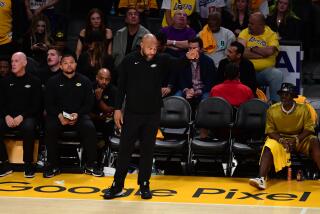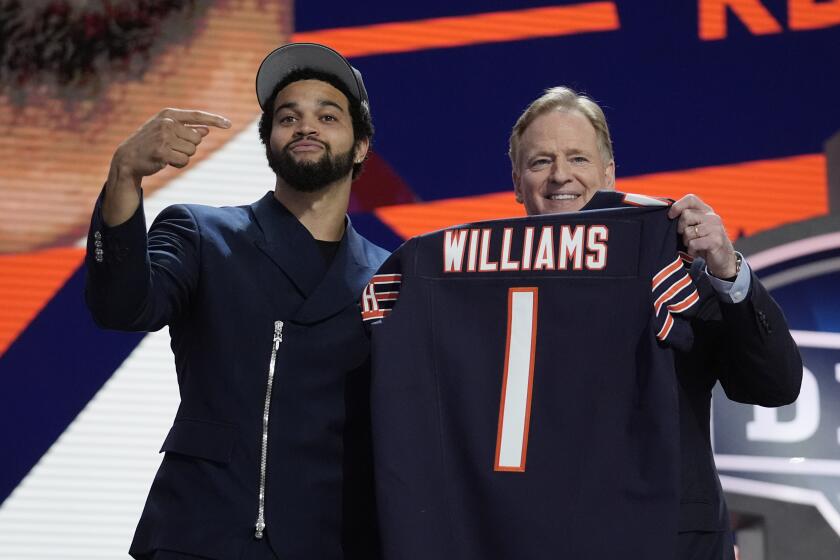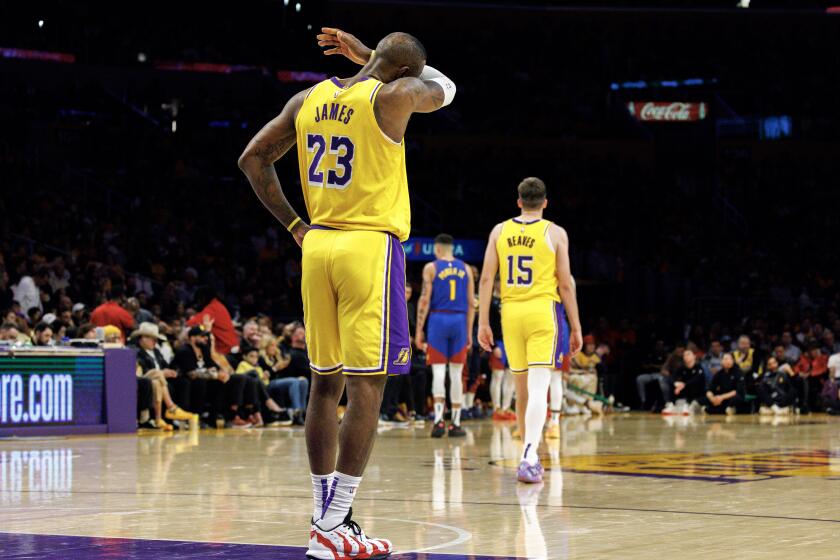NFL teams aren’t good postseason hosts
The Green Bay Packers used to stay warm by holding quarterback meetings in the sauna. The visiting team didn’t have that luxury.
The Atlanta Falcons made their visitors’ locker room extra snug by turning part of it into a storage closet.
The Halas-era Chicago Bears made the opposing team’s path to the field especially treacherous.
And the Washington Redskins? They had Frankie Laine. More later about what that old-time crooner had to do with winning and losing in the nation’s capital.
But what it’s all about is home-field advantage, harnessing familiar surroundings, passionate fans and the weather, and using them to your benefit. Throughout NFL history, teams have strived to send one unwavering message:
Home is where the hurt is.
“You basically want to create an environment that’s uncomfortable for your opponent when they come into your building,” said NFL Network analyst Jim Mora, former coach of the Falcons and Seattle Seahawks, two teams that do it as well or better than any other.
The two home fields to watch this weekend are in Atlanta and Foxborough, Mass., where the top-seeded Falcons and New England Patriots make their postseason debuts. Atlanta plays Green Bay at the Georgia Dome, and New England plays the New York Jets at Gillette Stadium.
That the Falcons and Patriots have home-field advantage throughout the playoffs should send a cold shiver through the other six remaining playoff teams.
With Tom Brady starting at quarterback, the Patriots have won an NFL-record 28 consecutive regular-season games at home. When Matt Ryan is under center, the Falcons are 20-2 in the Georgia Dome.
“I remember in Atlanta, at one point they had this big spacious visitors’ locker room, and then they cut it in half and used part of it for storage,” Mora said. “So now everyone was sort of crammed in there together.
“It’s just like the floor’s harder, the carpet’s not as nice. Now the league won’t let you go overboard. They’re not going to let you just junk a place. It’s got to be decent. But you’re not going to out of your way to make your opponents feel comfortable in your house, that’s for sure.”
When Donovan McNabb returned to Philadelphia to play his former team, the Washington Redskins quarterback joked he was a bit concerned about the visitors’ locker room at otherwise beautiful Lincoln Financial Field. He had never ventured into that particular nook of the stadium.
“I’m sure it’s probably small, congested, probably not clean,” he said at the time. “But that’s what you do to opposing teams.”
Surely, the Packers are bracing for that. In fact, they’re going from Philadelphia to Atlanta in consecutive weeks, so they’ll be able to make a direct comparison.
“This is the way it’s going to be,” Packers Coach Mike McCarthy said. “We’re on the road. You play uphill when you get off the bus. You have to overcome the atmosphere that you’re playing in, particularly the communication challenge.”
The Seahawks understand that. They’ve given their home-field advantage a name: the 12th Man, in honor of their famously high-decibel crowd. Last Saturday, when the Seahawks played host to New Orleans at Qwest Field, the place got so loud it made the earth shake.
When Seattle’s Marshawn Lynch tore off his spectacular, 67-yard touchdown run, the cheering, jumping and stomping of 66,336 spectators registered like a small earthquake on a nearby seismometer.
“There was a clear 30 seconds or so of moderate shaking,” John Vidale, director of the Pacific Northwest Seismic Network at the University of Washington, told the Seattle Times. “It’s probably not the first time it’s ever happened, but it’s the first time we ever noticed.”
The advantage of noise is huge in football, and the league this season began allowing teams to use their video boards to encourage their fans to pump up the volume. That’s particularly effective when the visiting team is on offense and the place is so loud that the tackles can’t hear the snap count. The defensive linemen, in turn, get a split-second jump on them.
“If you’ve got a really great defensive line and you’re at home, it really does make a difference,” said ESPN’s Steve Young, a Hall of Fame quarterback. “When you have a defensive line that can really get off the ball, it just changes games.”
With their 12th Man back in Seattle, the Seahawks are on their own in Chicago. Were they playing the Bears in the days of Coach George Halas, those visiting players would be best to watch their step.
From 1921 to 1970, the Bears played at Wrigley Field, where visitors had to walk up two brick steps to go from their locker room to the field.
Doug Atkins, who played for the Bears from the mid-50s to mid-60s, told NFL Films’ Steve Sabol that Halas, then coach, would purposely loosen the mortar between those bricks in hopes that someone might twist an ankle going up or down.
“Atkins told me the old man was out there with a file working on that mortar,” Sabol said, laughing.
That wasn’t the only chicanery going on in the black-and-blue division. Years later, when the Green Bay weather would turn bitter cold, the Packers would thaw Brett Favre at halftime by holding their quarterback meetings in the sauna.
“I used to go in there at halftime with Brett and Mark Brunell,” former Packers quarterbacks coach Steve Mariucci told The Times in 2002. “We’d get warm real fast.”
So was the visitors’ locker room equipped with a sauna too?
“Heck no,” he said.
The Redskins, Sabol said, had an even steamier secret back when George Allen was their coach in the 1970s. Their home field was RFK Stadium, and there were huge double doors at the north end of the venue. When those doors were opened, a gust of wind would blow across the field.
Sabol said that just before an opposing team attempted a field goal toward the goal posts on the north end, a Redskins staffer would have those doors opened.
“The timing was important,” Sabol said. “Because the gust of wind would only be effective for maybe a minute.”
Here’s how the operation worked: When the visiting team was lining up for the kick, Redskins staffer Joe Sullivan — whom Sabol called Allen’s “007” — would use a walkie-talkie to radio a security guard at the doors, instructing they be opened.
The code word for the operation was “Frankie Laine.” It was that singer who had a country hit in 1968 called “The Wayward Wind.” So, you see, the road to the Super Bowl isn’t always a road.
Sometimes, it’s a Laine.
twitter.com/latimesfarmer
More to Read
Get our high school sports newsletter
Prep Rally is devoted to the SoCal high school sports experience, bringing you scores, stories and a behind-the-scenes look at what makes prep sports so popular.
You may occasionally receive promotional content from the Los Angeles Times.







